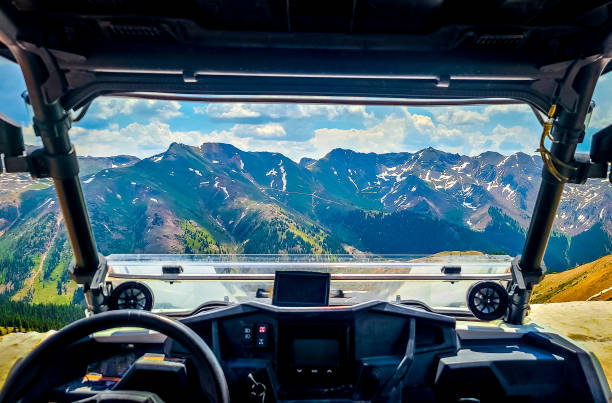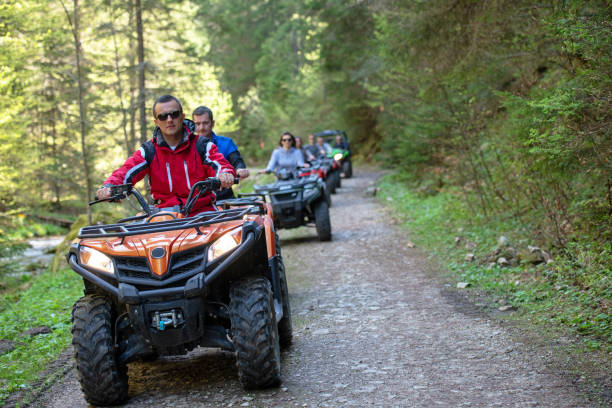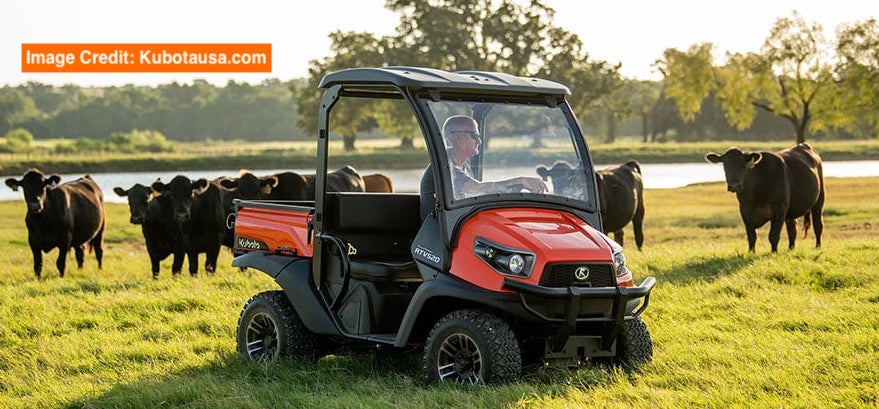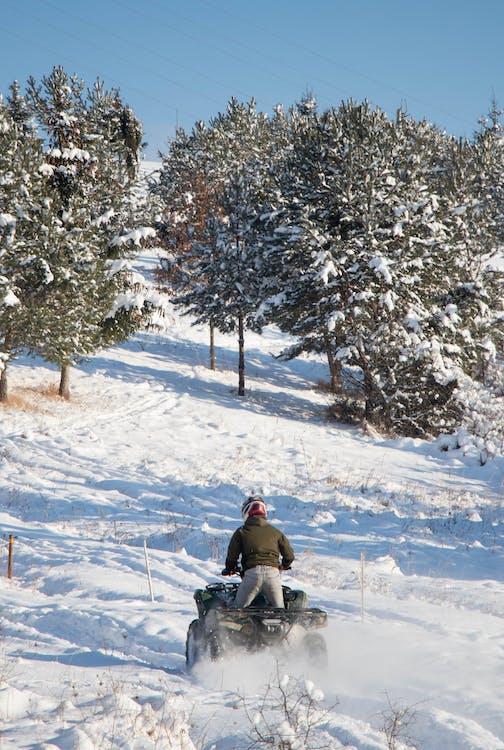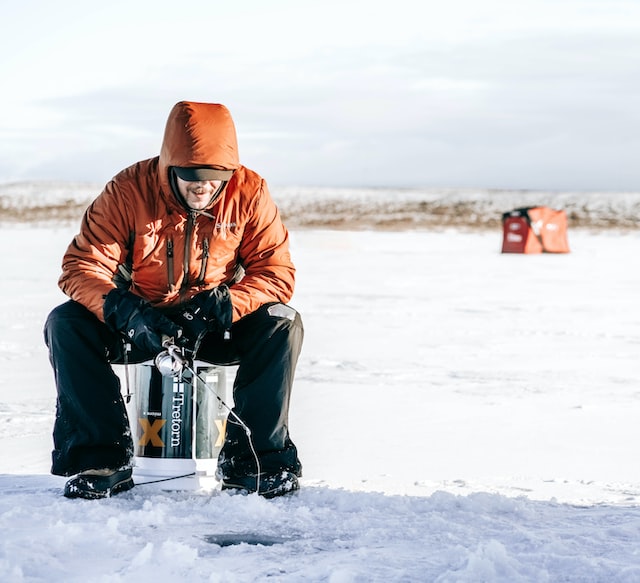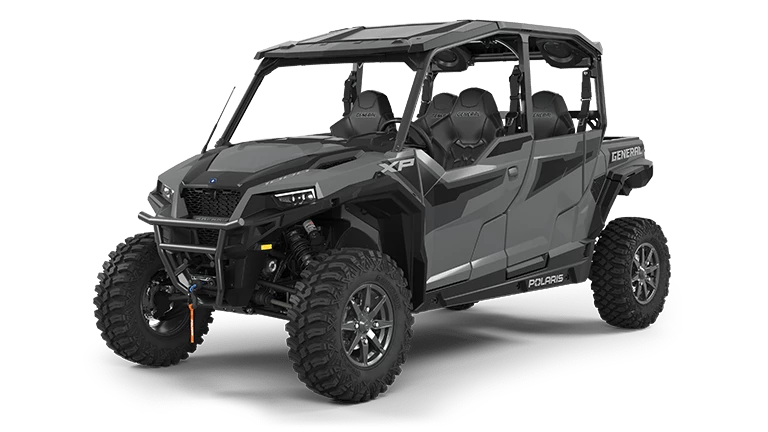As an Amazon Associate I may earn a commission from qualifying purchases at no additional cost to you.
Side-by-side ATVs, also known as utility terrain vehicles (UTVs), are popular recreational vehicles that offer great ways to explore the outdoors. Whether you’re a new rider or an experienced one looking to brush up on safety tips, it’s crucial to follow some basic Side-by-Side ATV Safety Tips to ensure a safe and enjoyable ride.
With more and more people on the trails, staying safe on the trails is more important than ever. By understanding the basics of UTV operation, being aware of common hazards, and learning from experienced riders, you can prevent accidents and make the most of your off-road adventures. In this article, we will discuss 10 safety tips every new rider should follow for a fun and secure side-by-side ATV experience.
After you brush up on Safety Tips be sure to check our Side-by-Side Ultimate Guide!
1. Get to Know Your Side-by-Side ATV
Before embarking on your first off-road adventure, it’s important to familiarize yourself with your side-by-side ATV. Start by reading the owner’s manual, which will provide valuable information about the vehicle’s operation, maintenance, and safety features. This step is crucial for new riders to ensure a smooth and enjoyable experience.
Next, familiarize yourself with the controls, such as the throttle, brakes, and steering. Locate important switches and buttons like headlights, turn signals, and emergency stop. Knowing the proper use of these controls will help you navigate various off-road situations safely and confidently.
Once you’ve become acquainted with the basics, take the time to practice operating your side-by-side ATV in a safe, controlled environment. This can include learning how to start and stop, accelerate and decelerate, and make both tight and wide turns.
As you gain confidence in your abilities, gradually progress to more challenging terrain and obstacles, always being mindful of your limits and ensuring your safety.
Maintaining your vehicle is an essential aspect of safe operation. Conduct regular checks on your side-by-side ATV, examining the brakes, tires, suspension, and other components for signs of wear or damage. Keep in mind that preventative maintenance can help identify potential issues and minimize the risk of accidents.
Lastly, consider taking an ATV safety course to further enhance your knowledge and abilities. These courses cover important topics such as laws and regulations, riding techniques, and environmental responsibility. Investing in your education can significantly improve your overall safety and ensure a positive side-by-side ATV experience.
2. Always Wear Safety Gear
It is crucial for new riders to prioritize safety by wearing the appropriate gear every time they venture out on their side-by-side ATV. This equipment not only protects you from potential injuries but also ensures better control and comfort during your ride.
Some essential safety gear for a side-by-side ATV includes:
- DOT-approved helmets that fit comfortably and securely to protect your head from impact
- Long pants, long boots, and a long sleeve shirt to shield your skin from debris and environmental factors
- Quality goggles that provide clear vision and protection from dust, dirt, and debris
- Outside chest protectors, boots, and knee guards to safeguard your body from impact and injury
- Gloves with a good grip to allow for better control of your vehicle and protection for your hands
In addition to considering your own safety, remember the safety of your passengers as well. Make sure they are outfitted with proper gear and follow safety guidelines. Encourage all riders to invest in quality safety equipment to create a culture of safety among side-by-side ATV enthusiasts.
By adhering to these safety gear guidelines, you can better safeguard yourself and others when embarking on side-by-side ATV adventures.
3. Ride with a Buddy
Riding with a buddy is an important safety measure for new ATV riders. Not only does it provide an extra level of security in case of emergencies, but it also offers opportunities to learn from more experienced riders. Always plan to ride with at least one other vehicle, and consider having riding buddies as a crucial ATV safety tip, especially for kids[source].
ATV accidents, breakdowns, or getting lost can happen to anyone, regardless of their experience level. Having a riding companion ensures that you both can help each other in case of such situations, which can be crucial in remote areas or when riding off the beaten path. It is advisable to have radio communication devices, GPS, and an emergency plan in place before you set out with your buddy.
When riding with a buddy, remember to maintain a safe distance between your ATVs and communicate frequently about any hazards or obstacles ahead. This will ensure that both of you are on the same page, decreasing the risk of accidents. Additionally, adopting a buddy system is a great way to exchange knowledge, as you can both learn from each other’s experiences and techniques, ultimately improving your riding skills.
4. Monitor Weather Conditions
Weather conditions can significantly impact the safety and enjoyment of your side-by-side ATV rides, especially for new riders. Monitoring the weather before and during your ride helps you prepare and make appropriate decisions for your journey.
One important weather factor to consider is temperature. Cold temperatures can affect your machine’s performance and your body’s tolerance to the environment. Be sure to dress appropriately for the conditions, including wearing waterproof and insulating layers during winter months. Bass Pro Boating Centers recommends understanding how cold weather affects your machine and knowing how to operate the ATV in mud, snow, and chilly temperatures.
Rain and wet conditions can also impact your side-by-side ATV experience. Slippery terrain increases the risk of accidents, while waterlogged trails can damage your vehicle. If you’re expecting rain, it’s essential to take precautions such as reducing your speed, maintaining a safe distance from other riders, and wearing waterproof gear.
Additionally, be aware of local terrains and landscapes that may be impacted by weather, such as flood-prone areas or regions known for sudden or violent storms. Keep an eye on updated weather forecasts and be prepared to change your plans if necessary.
5. Follow Trail Rules and Guidelines
One of the essential aspects of safe side-by-side ATV riding is adhering to trail rules and guidelines. These rules ensure the safety of riders and help protect the environment. Pay close attention to posted signs, trail markings, and restrictions. Avoid riding your ATV on public roads, as they are designed for off-road use only (Progressive).
When riding on trails, always maintain a safe speed and keep a sufficient distance between you and other riders. This will help prevent collisions and allow you enough time to react to any obstacles or sudden changes in the trail. Be considerate of other riders and trail users by yielding right-of-way when necessary and avoiding blocking the trail (West Bend Insurance).
Take note of the following trail etiquette tips as well:
- Stay on designated trails and avoid creating new paths, which can harm the environment and increase the risk of accidents.
- Keep noise levels low to minimize disturbance to wildlife and nearby residents.
- Respect trail closures and reroutes, as these may be in place for safety or environmental reasons.
- Practice “Leave No Trace” principles by picking up and packing out any trash or litter.
By following trail rules and guidelines, you’ll ensure a safe, enjoyable riding experience for yourself and others while promoting responsible ATV use.
6. Maintain a Safe Speed
One of the essential safety tips for new side-by-side ATV riders is to maintain a safe speed while riding. Keeping a safe speed helps ensure better control over the vehicle, which reduces the risk of accidents and injuries.
It is crucial to adjust your speed depending on the terrain, riding conditions, and your level of experience. For instance, rough, uneven terrains require lower speeds for better maneuverability, while smooth trails may allow for slightly higher speeds.
Riding within your comfort zone and skill level is essential. New riders should avoid pushing themselves to ride at high speeds before they become experienced enough to handle such conditions. Additionally, it’s wise to be aware of any posted speed limits or local regulations that apply to the riding area.
When riding in a group, it’s essential to maintain a safe distance between vehicles. This allows for sufficient reaction time in the event of a sudden stop or change in direction. A general rule of thumb is to maintain a distance equal to at least two to three seconds behind the rider in front of you.
Here are a few key points to remember when it comes to maintaining a safe speed while riding side-by-side ATVs:
- Adjust your speed according to terrain and riding conditions
- Ride within your comfort zone and skill level
- Follow posted speed limits and local regulations
- Maintain a safe distance between vehicles in a group
7. Keep a Proper Riding Posture
Maintaining the correct riding posture while riding your side-by-side ATV is critical for your safety and comfort. A proper posture allows you to effectively maneuver the vehicle, absorb bumps and unexpected terrain changes, and help maintain better control.
Start by sitting squarely in the seat, keeping your back straight and shoulders relaxed. Grip the steering wheel firmly but without adding too much tension. Your arms should be slightly bent at the elbow for optimum steering control. Position your feet flat on the floor, maintaining a comfortable distance from the pedals to allow for easy operation. For passengers, it’s essential to keep their feet on the designated footrests and use the handholds provided for extra support.
While riding, avoid leaning too far in any direction as it can compromise your balance and put extra strain on your body. Keep your bodyweight equally distributed between both hips, allowing you to adjust to shifting terrain quickly. Be prepared to continually adjust your posture to maintain control and stability as the terrain and riding conditions change.
Remember that proper posture is not only about comfort; it plays a significant role in maintaining control over the vehicle and preventing injuries. Use these tips to practice and master a safe and effective riding posture while enjoying your side-by-side ATV experience.
8. Transport Your Side-by-Side ATV Safely
When transporting your side-by-side ATV to a riding location, it is essential to ensure its safe and secure travel. Proper transportation helps avoid accidents and damage to your vehicle. Follow these guidelines to transport your side-by-side ATV safely:
- Choose the right trailer: Pick a trailer that is appropriately sized and designed for your side-by-side ATV. Ensure it has a sturdy construction and sufficient weight capacity. The Tracker Off Road website provides additional safety tips for ATV and UTV operation.
- Secure the vehicle: Use high-quality straps, such as ratchet straps, to tie down your side-by-side ATV on the trailer. Attach the straps to secure mounting points on the vehicle and adjust them for a snug fit.
- Inspect the trailer and vehicle: Check the trailer’s hitch, lights, and other components before each use. Perform a thorough inspection of your side-by-side ATV to ensure it is properly secured and there are no loose parts that could cause issues during transport.
- Drive cautiously: Drive at a safe speed and increase your following distance when towing a side-by-side ATV trailer. Navigate turns with caution and avoid abrupt maneuvers, which can cause instability or even accidents.
Transporting your side-by-side ATV safely is a crucial aspect of being a responsible rider. By adhering to these guidelines, you will ensure your vehicle’s safe arrival at your destination and be prepared for an enjoyable off-road adventure.
9. Don’t Drink and Ride
Alcohol and riding ATVs should never be mixed. Drinking alcohol impairs your ability to concentrate, make quick decisions, and react to hazards on the trail. When operating a side-by-side ATV, sobriety is crucial for ensuring the safety of yourself and others around you.
According to the Spicer’s Boat City, it is important to know your limits and not take undue risks while riding. Alcohol can lead to overconfidence and poor judgment, which increases the likelihood of accidents and injuries.
Here are a few reasons why you should avoid drinking and riding:
- Impaired reaction time: Alcohol affects your ability to respond quickly to unexpected situations on the trail.
- Reduced motor skills: Inebriation can lead to unsteady hands and compromised balance, making it challenging to control the side-by-side ATV.
- Inability to focus: Alcohol can cause drowsiness and a lack of concentration, making it difficult to stay on the trail and avoid hazards.
Always prioritize safety while operating a side-by-side ATV, and never drink and ride. Instead, designate a sober driver, or plan your ATV adventure for a day when you can fully enjoy the experience without compromising your safety.
10. Attend Riding Courses and Practice Regularly
Enrolling in ATV riding courses can greatly benefit new riders as they provide professional guidance and essential safety protocols. One highly recommended course is the ATV Safety Institute’s training program, which covers various aspects of ATV operation, maintenance, and safe riding practices.
Additionally, the EASI Rider Safety Training Courses can also help you learn the proper techniques to ride your side-by-side ATV safely. These courses are designed to suit riders of all experience levels, ensuring that everyone can benefit from the expert instruction.
Practicing regularly is another crucial aspect of becoming a safe and proficient ATV rider. Dedicate time to ride your side-by-side ATV in a controlled environment while focusing on improving your skills and understanding of the vehicle. Make sure to:
- Gradually increase the difficulty of the terrain as you become more confident.
- Practice riding with a co-rider or a small group, improving communication and teamwork skills.
- Simulate various scenarios, such as encountering obstacles and making emergency stops.
By attending riding courses and practicing regularly, you’ll be better equipped to handle your side-by-side ATV safely and enjoyably in various situations.


